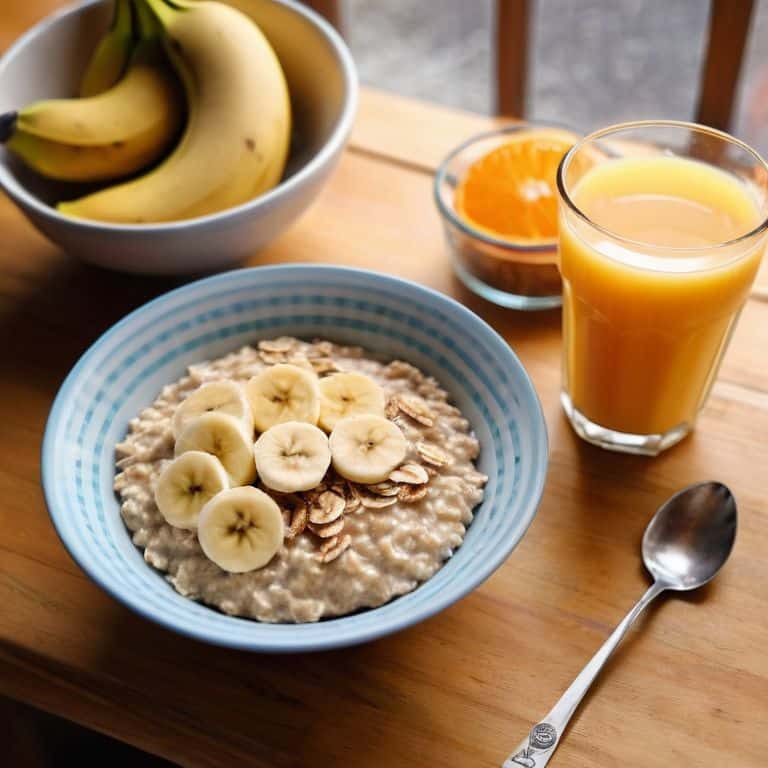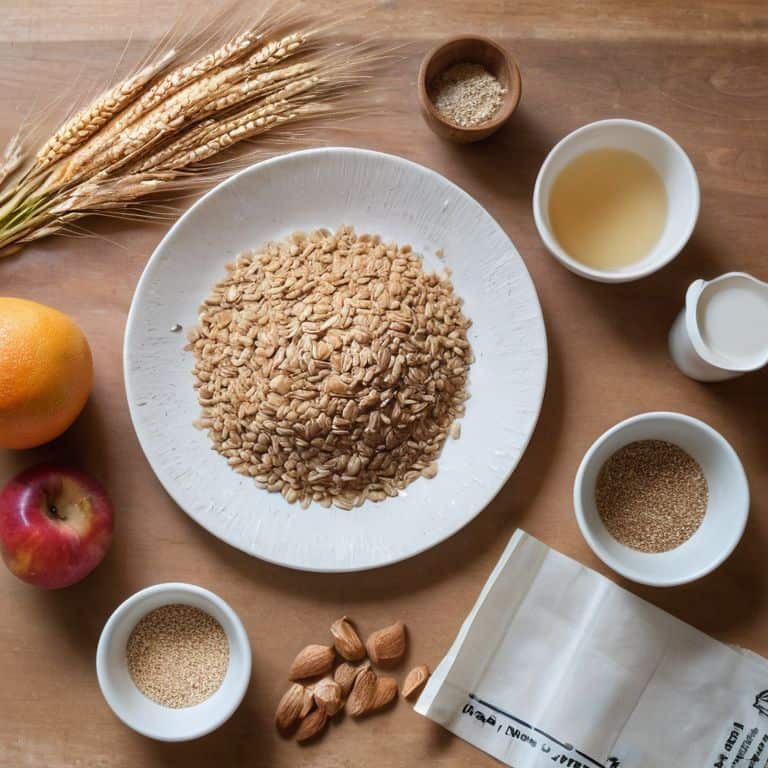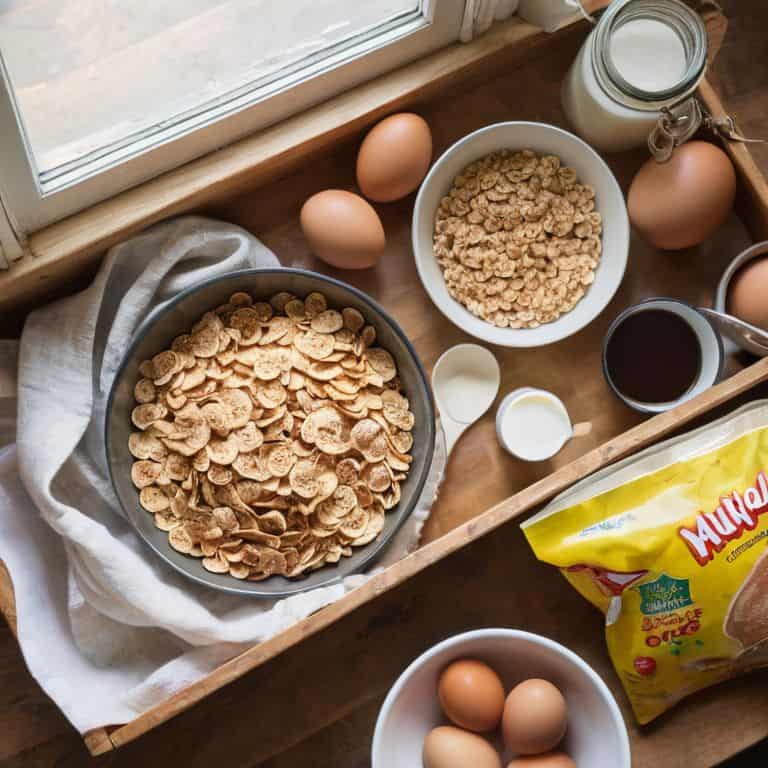I still remember the days when I’d mindlessly devour an entire bag of chips, thinking it was just one serving. It wasn’t until I started paying attention to the nutrition label that I realized my mistake. Learning how to understand a serving size was a game-changer for me, and it’s a skill I wish someone had taught me earlier. It’s astonishing how often we’re misled by packaging and our own perceptions, leading to unhealthy habits and guilt trips.
As a nutritionist, I’m committed to cutting through the noise and providing you with no-nonsense advice on healthy eating. In this article, I’ll share my personal tips and expertise on how to understand a serving size, so you can make informed choices and enjoy your favorite foods without sacrificing your wellness goals. My approach is all about adding nutrients, not just removing calories, and finding joy in the process. I believe that healthy food can be delicious, and I’m excited to show you how to make serving sizes a delicious part of your self-care journey.
Table of Contents
Savoring the Right Amount

As I hit the trails for my morning run, I often think about healthy eating habits and how they can impact our overall well-being. It’s amazing how something as simple as _measuring food portions_ can make a huge difference in our diets. When I’m back in my kitchen, I love experimenting with new recipes and techniques to make healthy eating a joy. One of my favorite things to do is visit the local farmers’ market to get inspiration from the seasonal produce.
I believe that _understanding nutrition labels_ is key to making informed decisions about what we put in our bodies. By taking a closer look at the standard serving sizes listed on the labels, we can get a better sense of what a realistic portion size looks like. This can be especially helpful when it comes to our favorite treats – by knowing exactly how much we’re consuming, we can indulge without feeling guilty.
In my experience, developing healthy eating habits is all about finding a balance that works for you. Rather than focusing on restrictive diets or dietary guidelines, I like to emphasize the importance of _adding nutrients_ to our meals. By incorporating a variety of whole foods into our diets, we can create delicious and satisfying meals that nourish our bodies and leave us feeling fulfilled.
Decoding Nutrition Labels With Ease
To make informed choices, we need to understand the basics of nutrition labels. This means recognizing the serving size, total calories, and percentage of daily values for various nutrients. By doing so, we can begin to make sense of the information provided and use it to our advantage.
When reviewing nutrition labels, I always look for the percentage of daily values to get a sense of how a particular food fits into my overall diet. This helps me balance my nutrient intake and ensure I’m getting the most out of the foods I eat.
Measuring Food Portions for Joy
When it comes to measuring food portions, I believe in finding a balance that brings joy to your meals. This means not just focusing on the quantity, but also the quality of the food you’re eating. By doing so, you’ll start to appreciate the flavors and textures of each ingredient, making mealtime a more satisfying experience.
To make portion control a breeze, try using measuring cups as a guide. This simple tool can help you gauge your food intake without feeling restrictive. Remember, the goal is to nourish your body, not to deprive it of the foods you love.
How to Understand a Serving Size

To develop healthy eating habits, it’s essential to grasp the concept of serving sizes. This involves understanding nutrition labels, which can sometimes be overwhelming. However, by familiarizing yourself with standard serving sizes, you’ll be better equipped to make informed decisions about your diet.
When it comes to measuring food portions, accuracy is key. Using food measurement techniques such as a food scale or measuring cups can help you gauge your intake more effectively. This practice allows you to enjoy your favorite foods while maintaining a balanced diet.
By adopting these habits, you’ll be well on your way to establishing a positive relationship with food. Dietary guidelines are in place to guide us, but it’s equally important to listen to our bodies and honor our cravings. By doing so, we can create a more balanced approach to nutrition, one that prioritizes joy and satisfaction alongside nutritional value.
Mastering Food Measurement Techniques
To make measuring food portions a breeze, I recommend investing in a digital food scale. This handy tool allows you to accurately measure your food intake, taking the guesswork out of serving sizes. With a digital food scale, you can easily weigh your food and track your progress, making it a valuable asset in your healthy eating journey.
By mastering portion control, you’ll be able to enjoy your favorite foods while maintaining a balanced diet. This skill is essential for developing a healthy relationship with food, and it’s easier to achieve than you think. Start by measuring out your usual snacks and meals, and soon you’ll be able to eyeball a serving size with confidence.
Standard Sizes for Healthy Eating
When it comes to healthy eating, having a sense of standard sizes can be incredibly helpful. This means understanding that a serving of protein, like chicken or fish, is about the size of a deck of cards. It’s not about restricting yourself, but rather about developing a sense of what a balanced meal looks like.
To make this easier, I like to think about portion control in terms of my favorite activities, like trail running. Just as I need to pace myself on a long run, I need to pace my eating to ensure I’m fueling my body for optimal performance. By using standard sizes as a guide, I can indulge in my favorite foods while still nourishing my body.
Nourishing Your Way: 5 Essential Tips to Master Serving Sizes
- Start a food diary to track your eating habits and identify patterns, helping you understand how serving sizes fit into your daily routine
- Use a food scale or measuring cups to gauge your portions, making it easier to stick to recommended serving sizes without feeling deprived
- Choose whole foods like fruits, vegetables, and lean proteins, which often have natural serving sizes and are rich in nutrients
- Be mindful of packaging tricks, such as resealable bags or large containers, which can lead to overconsumption – opt for single-serving packs or divide snacks into individual portions
- Make serving sizes a sensory experience by savoring each bite, paying attention to flavors, textures, and aromas, and stopping when satisfied, not stuffed
Nourishing Your Way: 3 Key Takeaways
Savor your food, don’t just eat it: understanding serving sizes is key to a balanced diet and a happier you
Measure with joy, not restriction: mastering food measurement techniques will help you find freedom in your food choices
Healthy eating is not about deprivation, but addition: focus on adding nutrient-dense foods to your plate, rather than cutting out the foods you love
Nourishing Wisdom
Understanding a serving size is not about restricting yourself, but about embracing the freedom to savor each bite, knowing you’re nourishing your body with the perfect amount of love and care.
Laura Paskal
Embracing Mindful Eating

As we’ve explored the world of serving sizes, I hope you’ve gained a deeper understanding of how to decode nutrition labels and measure food portions with ease. By mastering these skills, you’ll be empowered to make informed choices that nourish your body and satisfy your cravings. Remember, it’s all about finding a balance that brings you joy and freedom in your relationship with food. Whether you’re a trail runner like me or just starting your wellness journey, knowing your serving sizes is a powerful tool to help you achieve your goals.
So, as you move forward on your path to mindful eating, I want to leave you with a final thought: healthy eating is not just about the food, it’s about the experience. Savor each bite, indulge in your favorite treats, and remember that nourishing your body is an act of self-love. By embracing this mindset, you’ll find that understanding serving sizes is not just about following rules, but about cultivating a deeper connection with yourself and the food that brings you delight and nourishment.
Frequently Asked Questions
How can I accurately measure serving sizes without a food scale?
No food scale? No problem! I use everyday objects like my hand or a deck of cards to estimate serving sizes. For example, a serving of protein is about the size of my palm, while a serving of grains is roughly the size of a fist. You can also use measuring cups or spoons to get a closer estimate.
What are some common mistakes people make when trying to understand serving sizes?
I’ve seen people misinterpret serving sizes by not checking the label, or assuming one package equals one serving. Others eyeball portions, which can lead to over or underestimating amounts. My tip? Take a minute to read labels and measure your food – it’s a simple step towards mindful eating and making progress towards your wellness goals.
Are serving sizes the same for different ages or activity levels, or do they vary?
Not all serving sizes are created equal, especially when it comes to age and activity level. For example, a young athlete may require more calories and nutrients than a sedentary adult, so their serving sizes would be adjusted accordingly. I recommend checking the Dietary Reference Intake (DRI) for specific guidelines tailored to your unique needs.
